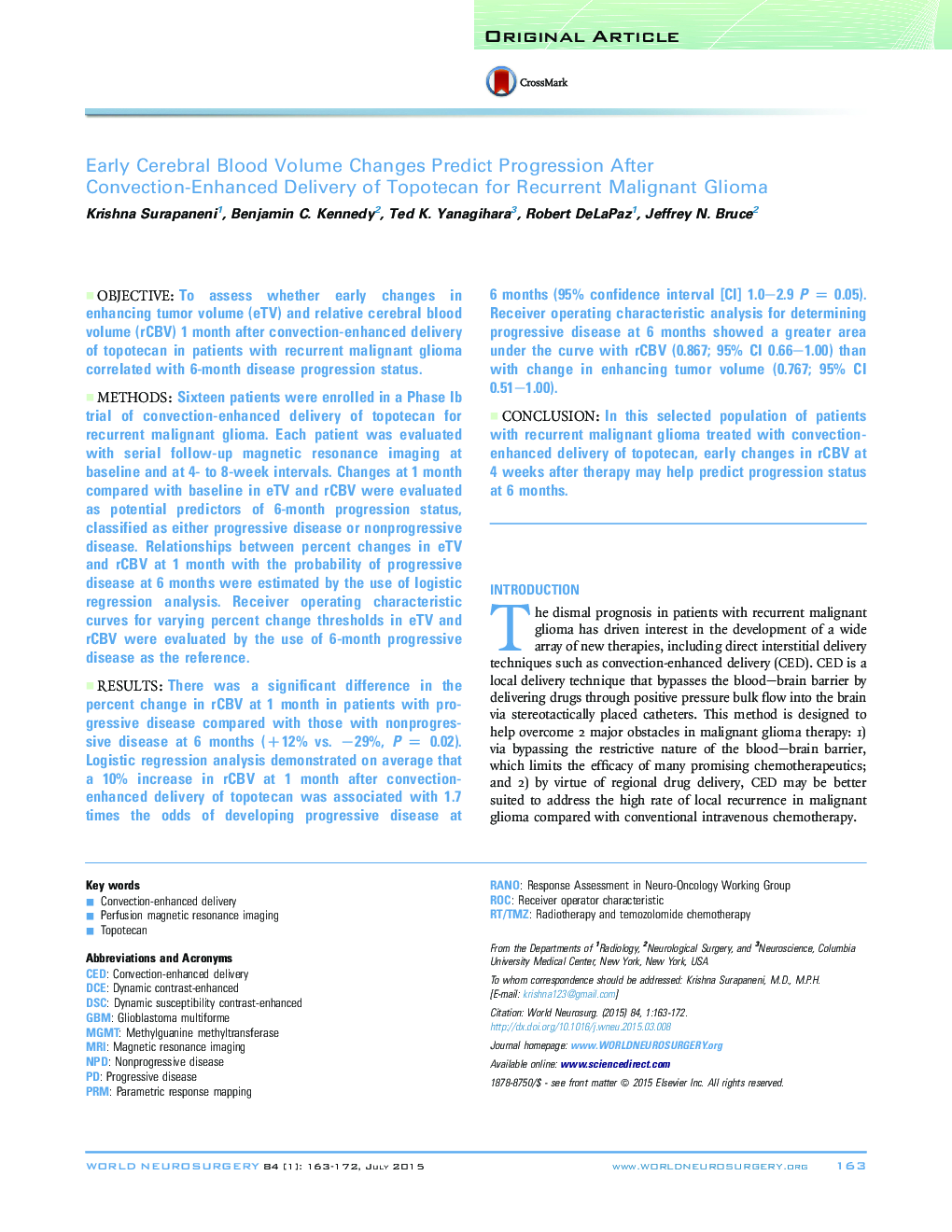| Article ID | Journal | Published Year | Pages | File Type |
|---|---|---|---|---|
| 3095076 | World Neurosurgery | 2015 | 10 Pages |
ObjectiveTo assess whether early changes in enhancing tumor volume (eTV) and relative cerebral blood volume (rCBV) 1 month after convection-enhanced delivery of topotecan in patients with recurrent malignant glioma correlated with 6-month disease progression status.MethodsSixteen patients were enrolled in a Phase Ib trial of convection-enhanced delivery of topotecan for recurrent malignant glioma. Each patient was evaluated with serial follow-up magnetic resonance imaging at baseline and at 4- to 8-week intervals. Changes at 1 month compared with baseline in eTV and rCBV were evaluated as potential predictors of 6-month progression status, classified as either progressive disease or nonprogressive disease. Relationships between percent changes in eTV and rCBV at 1 month with the probability of progressive disease at 6 months were estimated by the use of logistic regression analysis. Receiver operating characteristic curves for varying percent change thresholds in eTV and rCBV were evaluated by the use of 6-month progressive disease as the reference.ResultsThere was a significant difference in the percent change in rCBV at 1 month in patients with progressive disease compared with those with nonprogressive disease at 6 months (+12% vs. −29%, P = 0.02). Logistic regression analysis demonstrated on average that a 10% increase in rCBV at 1 month after convection-enhanced delivery of topotecan was associated with 1.7 times the odds of developing progressive disease at 6 months (95% confidence interval [CI] 1.0–2.9 P = 0.05). Receiver operating characteristic analysis for determining progressive disease at 6 months showed a greater area under the curve with rCBV (0.867; 95% CI 0.66–1.00) than with change in enhancing tumor volume (0.767; 95% CI 0.51–1.00).ConclusionIn this selected population of patients with recurrent malignant glioma treated with convection-enhanced delivery of topotecan, early changes in rCBV at 4 weeks after therapy may help predict progression status at 6 months.
